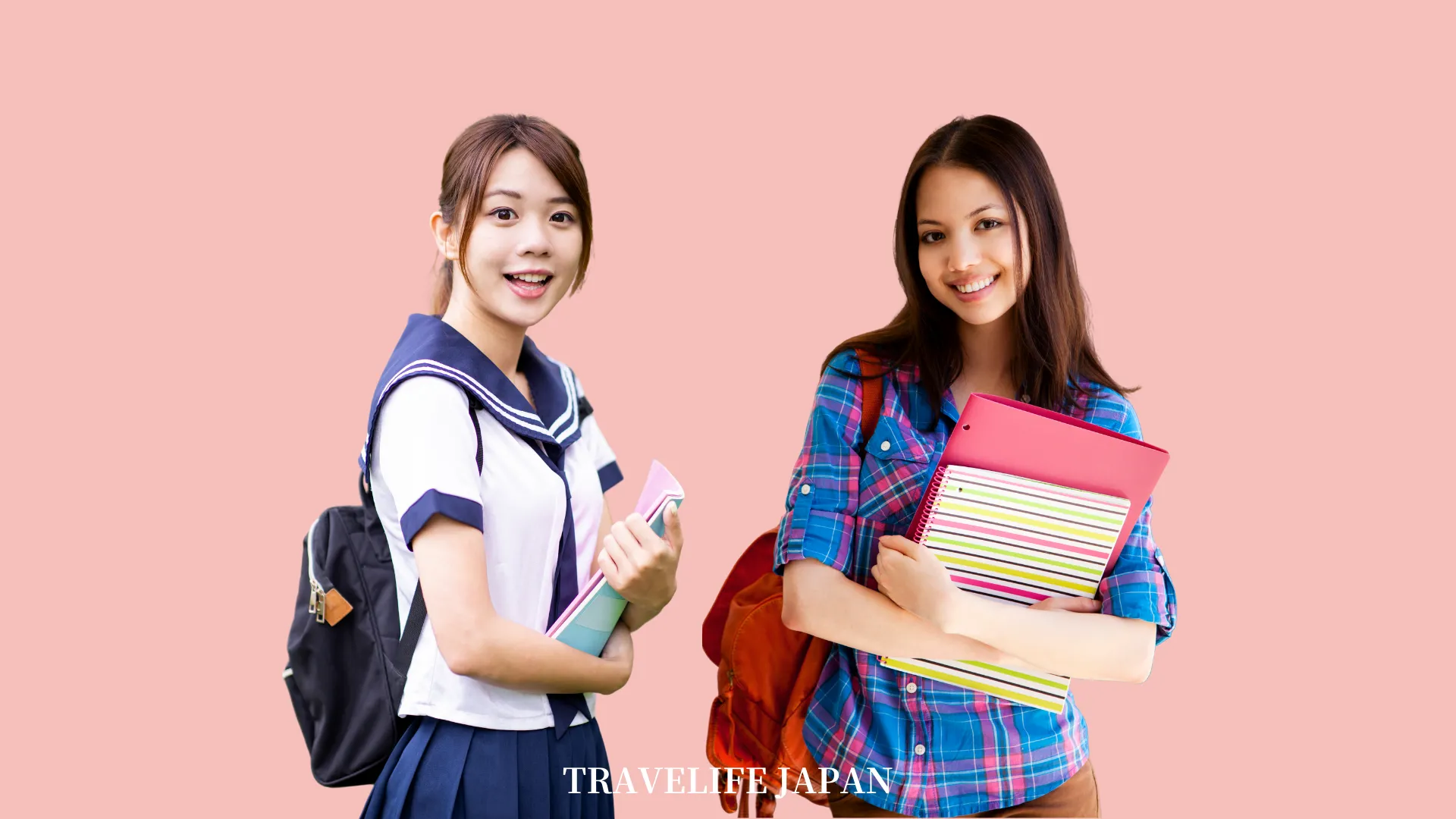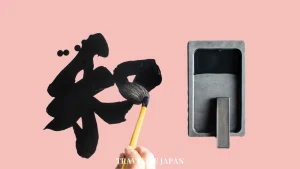Ever wondered about the key differences between Japanese and Western schools? This exploration offers a deep dive into the distinct educational landscapes, highlighting how cultural values shape schooling experiences. Ideal for educators in exchange programs or anyone curious about cross-cultural education, this comparison sheds light on unique educational philosophies.
Diverging Paths in Education

Comparing Japanese and Western schools reveals distinct cultural values shaping educational practices. In Japan, emphasis is placed on community, discipline, and holistic development. Students engage in activities like communal lunchtimes, participate in school-wide cleaning, and adhere to uniform practices, fostering a sense of unity and respect. Academic rigor is highlighted through entrance exams and cram schools. Conversely, Western education prioritizes individuality, offering a more diverse approach to student attire, extracurricular activities focused on competition, and a separation of academic and custodial responsibilities. These differences underline a broader cultural contrast: Japan values collective harmony and tradition, while Western schools focus on individual achievement and flexibility.
Key Differences Between Japanese and Western Schools
1. Student Transportation
- Japan
In Japan, the norm for student transportation showcases a commitment to independence, community, and sustainability. Most students walk or bike to school, facilitated by safe, well-planned urban layouts. This practice not only supports physical health and environmental consciousness but also fosters a sense of responsibility and community as students journey together. - Western
Conversely, in Western countries like the United States, school buses and parental drives are predominant, reflecting priorities such as safety and the accommodation of greater distances. These methods underscore a more supervised and individualistic approach to commuting, with school buses playing a key role in the daily educational experience and emphasizing different cultural values around mobility and child independence.
2. Entrance Exams and Cram Schools
- Japan
In Japan, the success in entrance exams is crucial for students’ academic and career paths, leading many to attend ‘juku’ or cram schools. These institutions offer intensive preparation for the competitive exams required by prestigious high schools and universities, reflecting the societal value placed on academic achievement and the prestige of elite institutions. - Western
Conversely, Western education systems incorporate a broader approach to admissions, evaluating students through a mix of standardized tests, extracurricular achievements, essays, and interviews. This holistic method aims to assess a student’s overall potential beyond just test scores, contrasting with Japan’s exam-centric model that emphasizes rigorous study and academic performance.
3. Student Behavior and Discipline
- Japan
Japanese schools prioritize fostering a sense of group responsibility and self-discipline in their approach to student behavior. Behavioral issues are often addressed through collective practices like class discussions, highlighting the impact of actions on the group. This method aims to maintain harmony and respect within the classroom, encouraging appropriate behavior through a collective sense of duty. - Western
Western educational systems, on the other hand, tend to focus on individual accountability when dealing with discipline. Methods such as detention and suspension emphasize the consequences of one’s actions, aiming to correct disruptive behavior through individual responsibility. This approach reflects a broader cultural value on personal responsibility and maintaining an effective learning environment.
4. Failing Grades Policy
- Japan
In Japan, the educational system adopts an inclusive approach by promoting students to the next grade regardless of academic performance, particularly at the elementary and junior high levels. This policy, aimed at ensuring student well-being and preserving class unity, avoids the stigma associated with grade repetition. It reflects a commitment to social harmony and collective progress over individual competition. - Western
Conversely, in Western education systems, such as in the United States and Europe, grade retention is common for students with failing grades, underscoring the importance of academic competency before advancement. This practice aims to prepare students for future challenges but may result in lowered self-esteem and social stigma, highlighting a focus on individual achievement and mastery of curriculum standards.
5. Teacher Allocation
- Japan
In Japan’s educational system, teachers are employed by local boards of education and undergo periodic reassignments across different schools within their district or prefecture. This practice ensures an equitable distribution of teaching talent and fosters diverse educational experiences among teachers, encouraging the renewal of teaching methods and preventing stagnation. - Western
Conversely, Western educational systems offer teachers more stability, allowing them to remain at one school for longer periods. This stability promotes the development of deep relationships with students and a thorough understanding of the school’s community, emphasizing continuity and the cultivation of a cohesive school culture over time. The contrast underscores Japan’s focus on systemic flexibility and broad exposure, while the West values long-term engagement and continuity in education.
6. Teachers’ Room and Workspace
- Japan
In Japanese schools, the ‘teachers’ room’ is a communal workspace central to the school’s organizational structure, facilitating lesson planning, collaboration, and informal teacher interactions. This approach, which lacks individual classrooms for teachers, promotes teamwork, shared responsibility, and a unified educational environment by having teachers move to different rooms for each class. - Western
Conversely, Western schools typically provide individual classrooms or offices for teachers, allowing them to personalize their teaching spaces. This practice supports a teacher’s autonomy, individuality, and personal teaching style, encouraging the creation of unique environments tailored to their students’ needs. The organizational difference underscores cultural values: Japan emphasizes collective effort, while the West focuses on individual expression and autonomy.
7. School Uniforms
- Japan
In Japan, school uniforms are a crucial part of the educational culture, symbolizing unity, tradition, and belonging from junior high school onwards. These uniforms, often inspired by traditional attire, play a significant role in minimizing socioeconomic disparities and reinforcing the school’s identity. The strict adherence to uniform standards reflects Japan’s societal values of conformity, discipline, and order. - Western
In contrast, Western schools, especially public ones, commonly offer a more relaxed approach to student attire, valuing individuality and self-expression. Uniforms, mainly in private or religious schools, aim to promote discipline and equality but lack the deep cultural significance seen in Japan. This distinction highlights the differing priorities between Japanese schools’ focus on group identity and Western schools’ emphasis on personal expression and individual comfort.
8. Academic Year Structure
- Japan
In Japan, the academic year starts in April and ends in March, aligning with the fiscal year and spring’s symbolic new beginnings. This schedule is culturally significant, coinciding with the cherry blossom season, symbolizing renewal and growth. The choice of April reflects Japan’s emphasis on natural cycles and cultural traditions, integrating educational beginnings with times of beauty and renewal. - Western
Conversely, the Western academic year typically begins in September and concludes in June, a structure historically linked to the agricultural calendar to accommodate farming cycles. Now, this schedule facilitates a long summer break, supporting rest, travel, and employment opportunities, adapting historical practices to modern educational and lifestyle needs.
9. Grade Level Organization
- Japan
The Japanese education system is structured into a 6-3-3 configuration: six years of elementary school, three years of junior high, and three years of high school. This organization reflects Japan’s cultural and educational philosophy, tailoring each stage to the developmental needs of students—from foundational learning in elementary, to specialized content in junior high, and preparation for future endeavors in high school. - Western
Conversely, the Western education model, particularly in the United States, typically follows a K-12 structure: kindergarten, elementary school (1-5), middle school (6-8), and high school (9-12). This system offers a more gradual educational progression, emphasizing continuous development and accommodating individual student pathways.
10. Classroom Dynamics
- Japan
In Japanese schools, the classroom dynamics emphasize community and consistency, with students staying in one room for most subjects while teachers rotate. This fosters a stable environment, enhancing the sense of community and shared identity among students. The classroom serves as a central space for learning, social activities, and daily routines, strengthening group cohesion and belonging. - Western
Conversely, in Western education systems, students often move between classrooms for different subjects, experiencing varied learning environments and teaching styles. This model encourages exposure to diversity but may dilute the sense of a unified student community. It highlights individual student experiences and adapts to a wider range of learning contexts, reflecting cultural values of individuality and varied educational experiences.
11. School Footwear
- Japan
In Japan, the practice of changing footwear before entering schools signifies respect, cleanliness, and a clear transition from outside to an educational environment. Students and teachers swap outdoor shoes for indoor shoes, a ritual extending the traditional Japanese custom of removing shoes at home. This practice maintains the school’s cleanliness and symbolizes a mental shift to learning and respect for shared spaces. - Western
Conversely, in Western schools, there is typically no change of shoes, with students and teachers wearing their outdoor footwear indoors. This reflects a cultural preference for individual comfort and practicality, without a designated ritual to mark the transition between the external world and the school setting.
12. Lunchtime Culture
- Japan
In Japanese schools, lunchtime serves as a communal activity where students eat in their classrooms, either bringing a bento from home or partaking in a nutritionally balanced “kyushoku” served by rotating students. This practice fosters teamwork, social bonding, and respect for food, with a strict policy against junk food, emphasizing the importance of health and discipline. - Western
Conversely, Western schools typically offer a cafeteria-style lunch, allowing students a range of choices, including less healthy options. This approach emphasizes individual choice and convenience, reflecting a more individualistic cultural value in contrast to the Japanese emphasis on community and healthy eating habits within the educational system.
13. Cleaning Responsibilities
- Japan
In Japanese schools, the “osoji” practice has students participating in daily cleaning activities, including classrooms, hallways, and sometimes bathrooms. This routine promotes responsibility, respect, teamwork, and pride in one’s environment, reflecting a cultural emphasis on cleanliness and order. It’s an integral part of character building and fosters a strong sense of community among students. - Western
Conversely, Western schools typically employ janitorial staff for cleaning, with student responsibilities often confined to personal spaces like desks. This division highlights a different educational approach, prioritizing academic and extracurricular pursuits over communal custodial tasks, and emphasizing individual accountability rather than collective care and responsibility.
14. Extracurricular Activities
- Japan
In Japanese schools, club activities center on holistic development, teamwork, and fostering school spirit, emphasizing personal growth and community over competition. Ceremonies and festivals, integral to school culture, embody traditional values and communal identity. Events like the Entrance and Graduation Ceremonies, as well as Cultural Festivals and Sports Day, involve formal rituals and student participation, reinforcing unity and tradition. - Western
Conversely, extracurricular activities in Western schools focus on individual talent, competition, and achievement, mirroring cultural values around success. School events are typically more inclusive and casual, encouraging individual expression and offering a variety of participation levels, reflecting a preference for less structured social interaction and inclusivity.
Conclusion
This comprehensive examination of the differences between Japanese and Western schools reveals much about the underlying cultural values and educational philosophies of each system. For educators and cultural enthusiasts alike, understanding these distinctions is not just about recognizing divergent practices, but also about appreciating the rich cultural contexts that shape these educational experiences. Whether it’s the communal approach to teaching and learning, the emphasis on collective responsibility, or the integration of cultural rituals into school life, these differences offer valuable insights and lessons that transcend geographical boundaries.
\ Follow Our Community /
STUDY IN JAPAN
INQUIRE NOW
Please feel free to seek our help at NO COST.
We are looking forward to meeting you!








